
July Birthstone: The Allure, Mystique & Glamour of the Ruby
Those born in July are graced with the radiant ruby as their July birthstone. Rubies are bold red, durable gemstones that match July’s associations with light, fun, and contentment.
July was named in 44 BC after someone born in July: Julius Caesar. Previously, ancient Romans called the month Quintilis, meaning “fifth,” when March started the year.
Ancients believed July was overseen by the king of gods and sky god, Jupiter (Zeus in Greek myths). The sun god Apollo was also a prominent feature of July events.
Besides the sun, another star associated with July is Sirius, the brightest star. Also called the “Dog Star,” Sirius’s rise and fall over the horizon in July and August has been nicknamed the “dog days of summer.”
Now that you know what your birth month is all about, it’s time to learn about your birthstone. Today, we’ll go over all of the July birthstone’s history, meanings, powers, and value factors, along with some alternative stones to choose from.
{{video:https://youtu.be/AvkdD6yVLzA}}
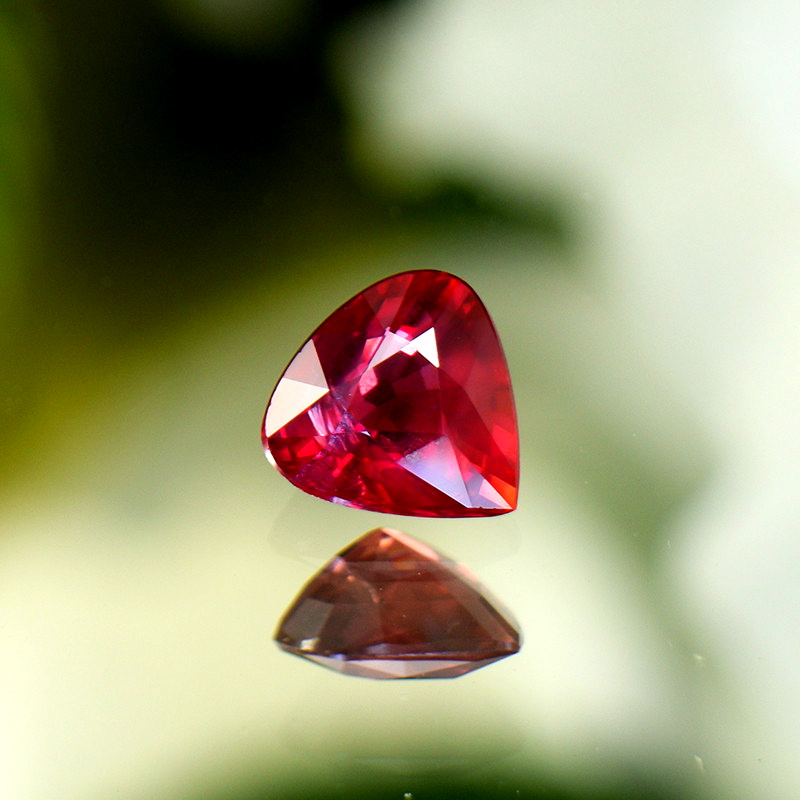
Historical & Cultural Significance of July Birthstone: Ruby
The radiant red ruby is the traditional July birthstone. This precious gemstone is also the traditional 15th, 40th, and 80th wedding anniversary stone.
The name “ruby” comes from the Latin rubeus, meaning “red,” for pretty obvious reasons.
The July birthstone ruby’s history stretches way back, with lore dating back to ancient times.
Ruby’s Prominence in Ancient Civilizations
The oldest known ruby is a 2.5 billion-year-old specimen from Greenland discovered in 2021. But much of ruby’s early history lies in south and southeast Asia, specifically Burma (now Myanmar) and India.
Rubies were likely mined in Myanmar since 2500 BC, as they’ve been found in the Mogok Valley with Stone Age tools. Records of rubies in Myanmar date back to the 6th century AD, and Mogok was the top source of high-quality rubies for around 800 years!
Ancient Burmese practices included warriors putting rubies into their skin for invincibility during battle and the king claiming the biggest rubies as his own.
The July birthstone also has history in India and Hinduism.
The Sanskrit word for ruby was Ratnaraj, meaning “king of precious stones.” Vedic astrologers believed rubies exemplified sun god Surya. Ancient Hindus offered rubies to supreme god Krishna in hopes of being reborn as emperors or kings.
Early gemology came from India, where Hindus separated rubies into 4 castes, the best being called “Brahmin.”
Of course, beliefs about rubies weren’t limited to India and Burma.
Ancient Greeks believed rubies could melt wax. An Islamic legend claims rubies were created by the first man, Adam, after being exiled from the Garden of Eden.
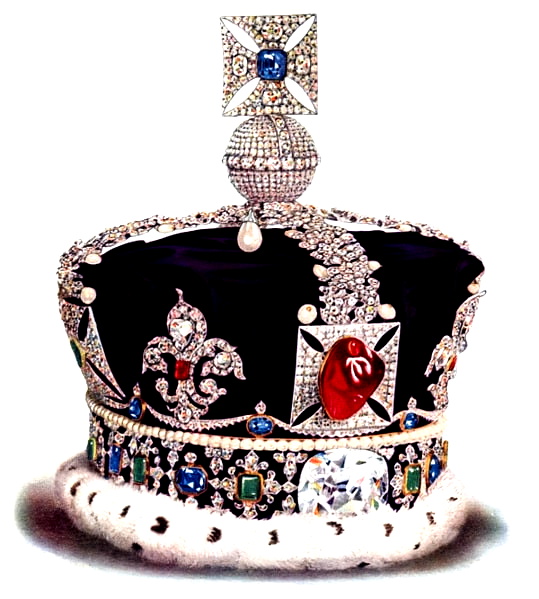 Pictured above: Imperial State Crown of the United Kingdom featuring "Black Prince's Ruby" centerstone | Image credit: Cyril James Humphries Davenport circa 1919, Public domain
Pictured above: Imperial State Crown of the United Kingdom featuring "Black Prince's Ruby" centerstone | Image credit: Cyril James Humphries Davenport circa 1919, Public domain
Rubies in Royal & Noble Traditions
The July birthstone was popular among southeast Asian royalty, and this fame only increased with ruby’s introduction to medieval Europe.
While trying to secure rubies for King Louis XIV, French gem merchant Jean-Baptiste Tavernier wrote about rubies being the most valuable gems traded among royal Indian courts.
Renaissance-era royalty had many unique rubies, from King Henry VIII’s famous ruby and pearl necklace portrait to Holy Roman Emperor Rudolf II’s hen’s egg-sized ruby used for healing.
Examples of Famous Rubies
Some other examples of the July birthstone worn by royals, nobles, or celebrities:
Rubies of Archduchess Maria Anna of Austria: 1) Set with diamond bow - Given by her father Archduke Friedrich, Duke of Teschen, to commemorate the birth of Maria’s son; Sold in 2018 for over $372,000 2) Engagement ring with diamonds
Sutherland Ruby, Diamond, and Pearl Necklace: Made for the marriage of Marquess of Stafford, son of Elizabeth Gordon (Countess of Sutherland); Created in 1849 using gray pearls secretly given to Elizabeth for safekeeping by Marie Antoinette before Antoinette’s death
Meniere Ruby and Diamond Brooch: Originally part of ruby and diamond set commissioned by Napoleon Bonaparte in 1810 for French Crown Jewels to be worn by Empress Marie-Louise of Austria; Remounted in 1816 for Marie-Thérèse Charlotte, Royal Duchess of Angoulême; Set sold at Louvre auction in 1887 and earrings later converted into brooch auctioned by Christie’s in 2021
Elizabeth Taylor’s Ruby Suite: Set of untreated ruby and diamond jewelry by Cartier; Gifted to Elizabeth Taylor by husband Mike Todd in 1957; Sold at auction by Christie’s in 2011
Historically, ruby was often mistaken for other red gemstones, particularly spinel.
Two notable examples are the “Black Prince’s Ruby,” (pictured above) a 170-carat red spinel cabochon dated back to the mid-1300s and the “Timur Ruby,” a 352-carat polished red spinel believed to be ruby until 1851.
One major difference between ruby and spinel is their mineralogy.
Geological Marvel: The Formation of Rubies
Ruby minerals are varieties of corundum, specifically red corundum. All other colors fall under sapphire. As a corundum variety, ruby is the second hardest gemstone after diamond, ranking at 9 on the Mohs scale.
Corundum forms inside igneous rocks that are aluminum-rich but silicon-free. Alternatively, they can form when aluminum-rich waters run through ancient sea beds, altering minerals present into corundum.
The minerals are composed of aluminum oxide, with various impurities imparting different colors like ruby’s signature red hues.
 Pictured above: Star ruby
Pictured above: Star ruby
Radiant Red: Unveiling the Allure of Ruby's Color
Pure corundum is colorless, so rubies are red because of impurities.
Traces of chromium replace some of the aluminum, resulting in ruby’s radiant red hues. More chromium means stronger, brighter reds and stronger fluorescence. Ferric iron impurities cause pink or orange undertones.
Ruby birthstones range from pinkish-red to dark red, with potential secondary purple, pink, or orange tones. Some gemologists debate whether pink corundum is ruby or pink sapphire, though.
The July birthstone’s color, source, and formation leads to different varieties:
Pigeon Blood Ruby: Medium-strong to strongly saturated, high-intensity, pure red color with medium to strong fluorescence; Epitome of top-quality Burmese or “Mogok” rubies
Star Ruby: Displays a multi-rayed star of reflected light on its surface via asterism
Mozambique Ruby: Make up most of the 2+ carat rubies in jewelry; Usually deep purplish-red to dark red, sometimes close to pigeon blood ruby standards
Thai Ruby: Mined in Thailand, another top ruby source; Rich, uniform, deep red coloring and high clarity unless halo or discoid fractures are present
Geneva Ruby: Oldest synthetic gemstone and synthetic ruby, created around 1885
Verneuil Ruby: Synthetic ruby created through the “Verneuil process” or flame-fusion method
Flux-Grown Ruby: Synthetic ruby created by dissolving aluminum oxide in a melted flux, followed by ruby crystallization
Color is just one factor of this July birthstone’s value.
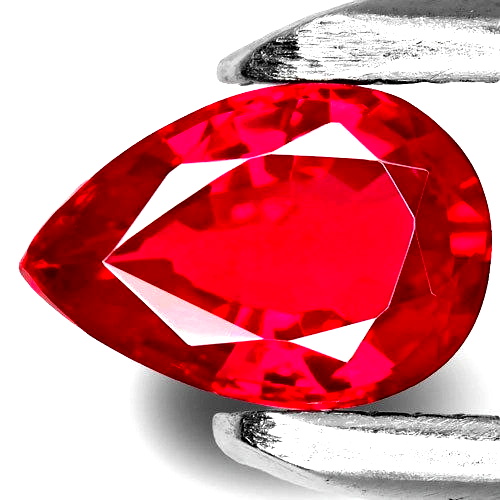 Pictured above: Faceted Mozambique ruby with pear shape
Pictured above: Faceted Mozambique ruby with pear shape
The 4 Cs: Assessing Ruby Quality
Rubies are graded on the 4 Cs: color, cut, clarity, and carat weight. Color has the most influence, followed by clarity, cut, and carat weight.
Color
The most valuable ruby color is “pigeon blood,” a bright, blood-red with no undertones.
The presence of secondary tones, like orange or purple, should be minimal. Brighter, more saturated red hues are best.
Clarity
Rubies have Type II clarity, meaning most have visible inclusions but high-quality specimens won’t have inclusions visible to the naked eye.
The most common inclusions in rubies are “silk,” which are thin, needle-like rutile crystals. Fractures or cavities are also common, which may lower ruby’s durability.
Cut
Many top-quality rubies are faceted. The best faceted cuts maximize color, weight, and brilliance. Many rubies are faceted into round, cushion, or pear shapes.
Rubies with more fractures are often cut into cabochons or carved. Star rubies must also be cut into cabochons.
Carat Weight
Because rubies often form as short, tabular crystals, high-quality ruby specimens over 1 carat are uncommon. As size goes up, quality usually decreases, making large, high-quality rubies rare.
Treatments
Certain ruby treatments are expected, while others will lower the July birthstone’s value. Heat treatments, which improve color and clarity, are incredibly common.
Another treatment is fracture-filling, often done with lead glass to improve a ruby’s transparency and sometimes enhance its color.
Controversial beryllium diffusion treatments, definitely lower value.
Shifting gears, what does the July birthstone mean spiritually?

July Birthstone Symbolism and Spiritual Connections
Over the years, rubies have gained quite the spiritual reputation. Some metaphysical nicknames for rubies are:
Stone of Love
Stone of Prophecy
Stone of Protection
Stone of Passion
Stone of Manifestation
Arguably the most prominent July birthstone meaning relates to blood.
Ancient societies believed rubies granted courage and invincibility. Others used ruby healing stones for treating blood loss, circulation, and inflammation.
Another belief was that rubies offered protection, worn on the left side to ward off danger. Some extended the birthstone’s protective abilities to preventing relationship troubles, exemplified in this poem published by Tiffany & Co in 1870:
The gleaming Ruby should adorn,
All those who in July are born,
For thus they’ll be exempt and free,
From lover’s doubts and anxiety.
In Eastern traditions, rubies sometimes represented the “third eye” on Budda statues, symbolizing enlightenment. Unsurprisingly, rubies are also third eye chakra stones.
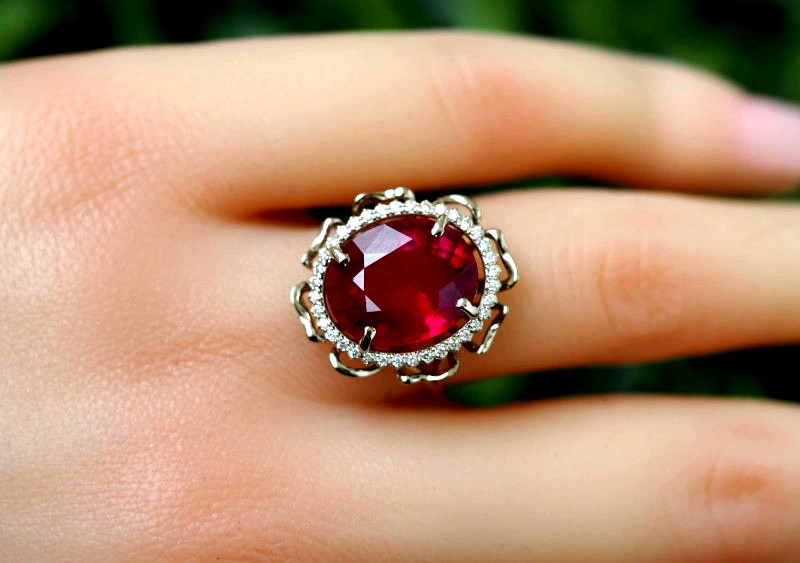 Pictured above: Faceted red ruby ring with white accent diamonds
Pictured above: Faceted red ruby ring with white accent diamonds
Ethical Mining and Sustainability
Many conscious consumers familiar with conflict diamonds may wonder about the ethics of ruby mining.
Unlike diamonds, rubies don’t have ethics certifications like the Kimberley Process. Sellers must be transparent about where and who they get their rubies from.
For most conscientious jewelers, that means sourcing non-Burmese rubies.
Why? Myanmar’s ruby industry has been shown to be corrupt, funding military coups and oppressive regimes. Reports from Mozambique also suggest human rights violations for ruby miners.
Instead, many jewelers opt for rubies from smaller, independently owned and vetted mines in places like Sri Lanka, Tanzania, and Greenland.
Another more ethical and sustainable option is synthetic ruby, which has all the same chemical and physical properties as natural rubies but created in a lab. Synthetic rubies are just as beautiful at a fraction of the cost.
But what about non-ruby July birthstones?
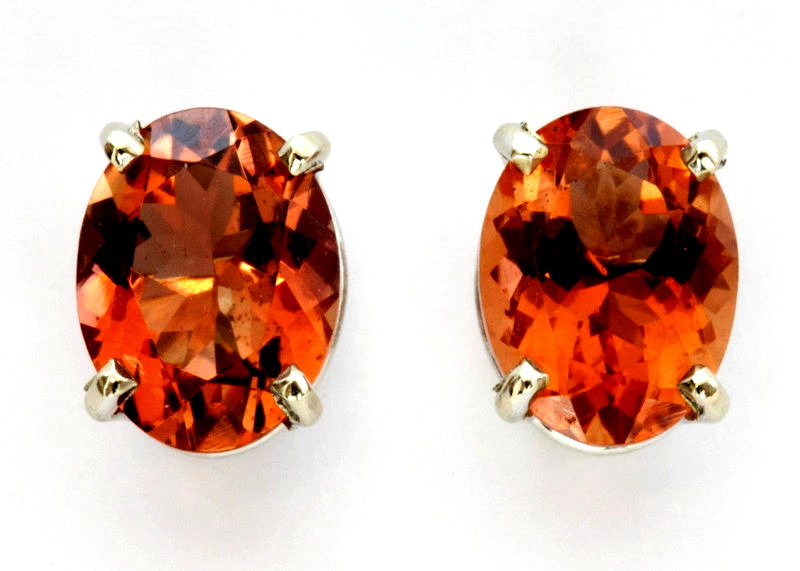 Pictured above: Faceted Oregon sunstone earrings
Pictured above: Faceted Oregon sunstone earrings
Alternative July Birthstones
Are there 2 birthstones for July? Many would say yes! Another frequently listed birthstone for July is onyx, a chalcedony variety.
In fact, onyx and its fellow chalcedony variety carnelian were the original July birthstones inspired by Biblical gemstone lists. The birthstone list created by the National Association of Goldsmiths in 1937 listed carnelian and onyx as alternative July birthstones.
In Hindu traditions, the July birthstone is sapphire, which has all of ruby’s properties but a broader range of colors.
Astrologically, what crystal is for July Leos? Ruled by the sun, Leos born in July can certainly benefit from ruby, but another option is the sparkling sunstone, a lighter-colored feldspar variety with metallic glittering called aventurescence.
What about July gemstones for Cancers? Cancers born in July can benefit from the alternative July birthstone onyx. Onyx gems are spiritually connected to harmonious partnerships and can help Cancers strengthen both their willpower and valued relationships.
If you’re simply looking for a similar-looking ruby substitute, some options are:
Once you’ve chosen the stone, it’s time to decide on what to do with it!
 Pictured above: Faceted ruby gold ring with white diamonds
Pictured above: Faceted ruby gold ring with white diamonds
Personalized July Birthstone Gifts & Celebrations
Choosing a July birthstone gift is a meaningful way to celebrate and show your loved one what they mean to you.
It’s even more meaningful if the gift is personalized. Here are some July birthstone jewelry and other gift ideas:
July birthstone necklace with a monogram pendant of their initial
Bracelet featuring July birthstones with your own birthstone
Tungsten ring with embedded birthstone
Stackable ring with birthstones embedded
Ruby stud earrings faceted into their favorite shape
It doesn’t even have to be jewelry! You can get some carved or raw home decor created with ruby or another July birthstone, a themed birthstone candle, a watercolor painting of their favorite July birthstone, or even a birthstone keychain.
What matters is that it comes from the heart and celebrates your July-born loved one!
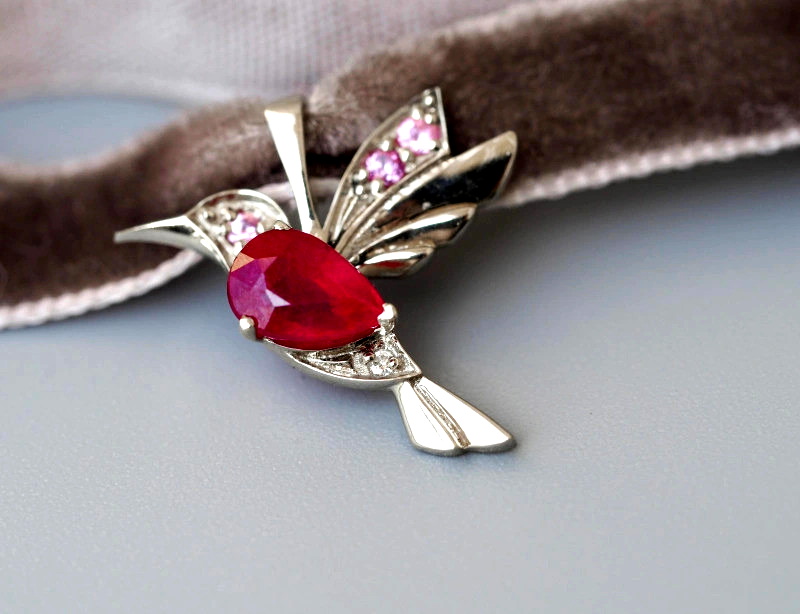
Explore the Magical World of July Birthstones!
Rubies are legendary, timeless gems that reflect the warmth and excitement of summer. Those born in July can commemorate the occasion with these gorgeous birthstones or another alternative birthstone. What matters is that your July birthstone represents you!
Find traditional and alternative July birthstones from our hundreds of gemstones available!
Search the Gemstone Encyclopedia
Related Auctions
Related Articles
Originally the Birthstones or gemstones were associated with a zodiac sign or the month of a individuals birth. Find out what your stone is and view the stones we have for sale
8th Feb 2021
Azotic treatment of Topaz and Quartz is a treatment that creates a layer of color over a gemstone. Learn more about this treatment and check out our stones fro sale.
8th May 2018
There are dozens of quartz and chalcedony gems with various colors and patterns. Learn all about quartz properties and every type of quartz, from amethyst and agate to plasma and phantom quartz!
15th Oct 2020
Latest Articles
Friedelite is an uncommon pink, red, or brown manganese silicate mineral best known from New Jersey and South Africa. Learn the prices, properties, uses, and history of friedelite gemstones.
23rd Dec 2024
Shortite is a rare mineral and rarer gemstone, usually found as colorless or yellow wedge-shaped crystals. Learn the value, history, and properties of shortite in this guide!
9th Dec 2024
Senarmontite is an uncommon antimony mineral mostly used industrially but occasionally collected as rare gems or pearly crystals. Find out all of the traits, uses, prices, and history of senarmontite.
27th Nov 2024
Article Categories
How To's is where you will find helpful articles from gem Rock Auctions on how to cut gemstones, select gemstones and buy gemstones.
9 Articles





